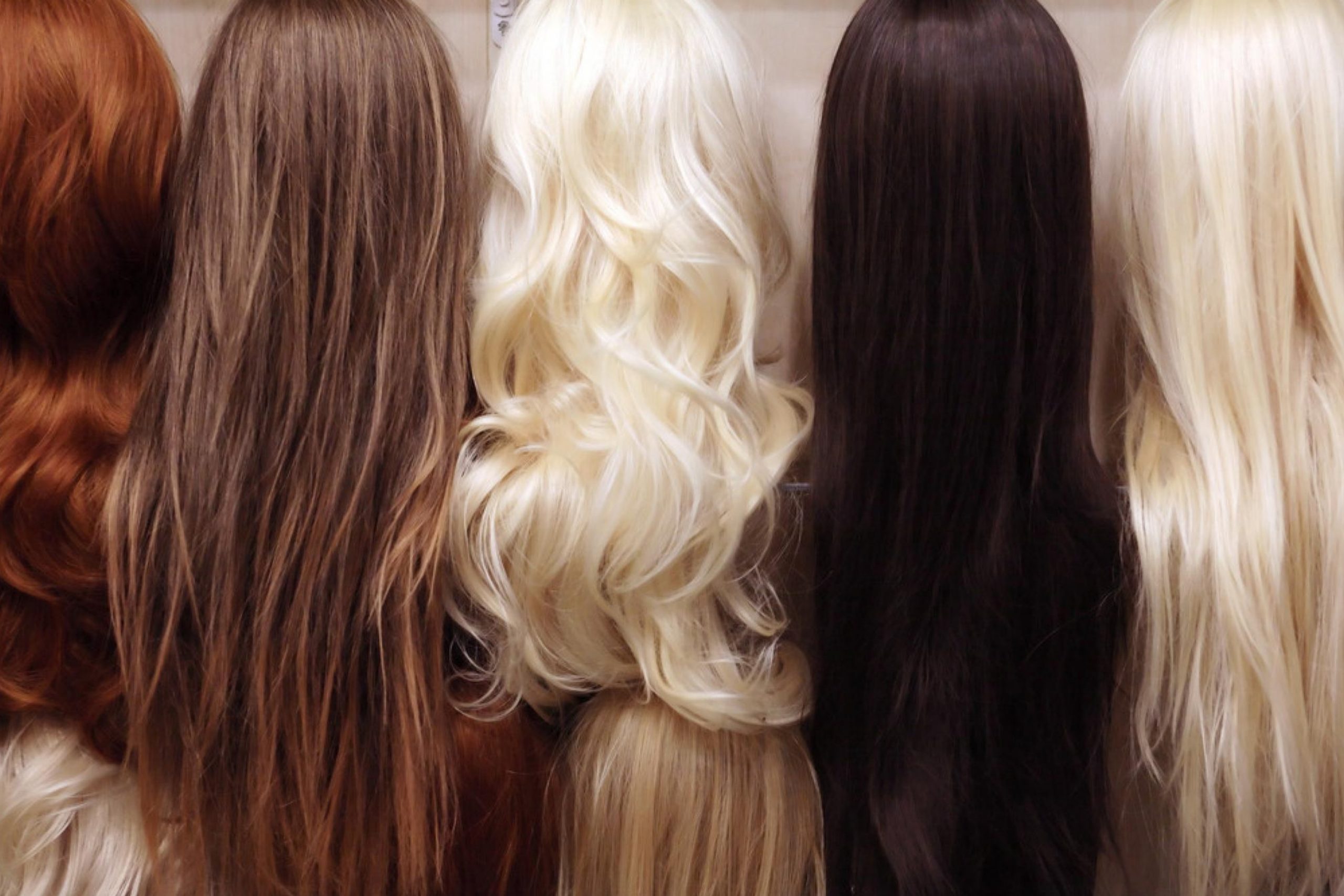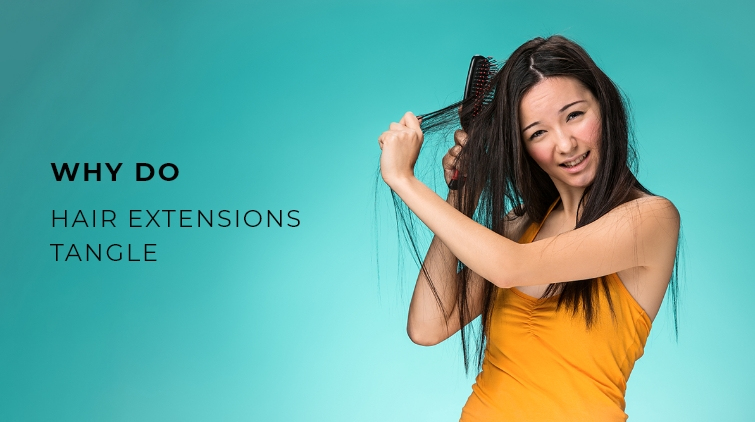Introduction
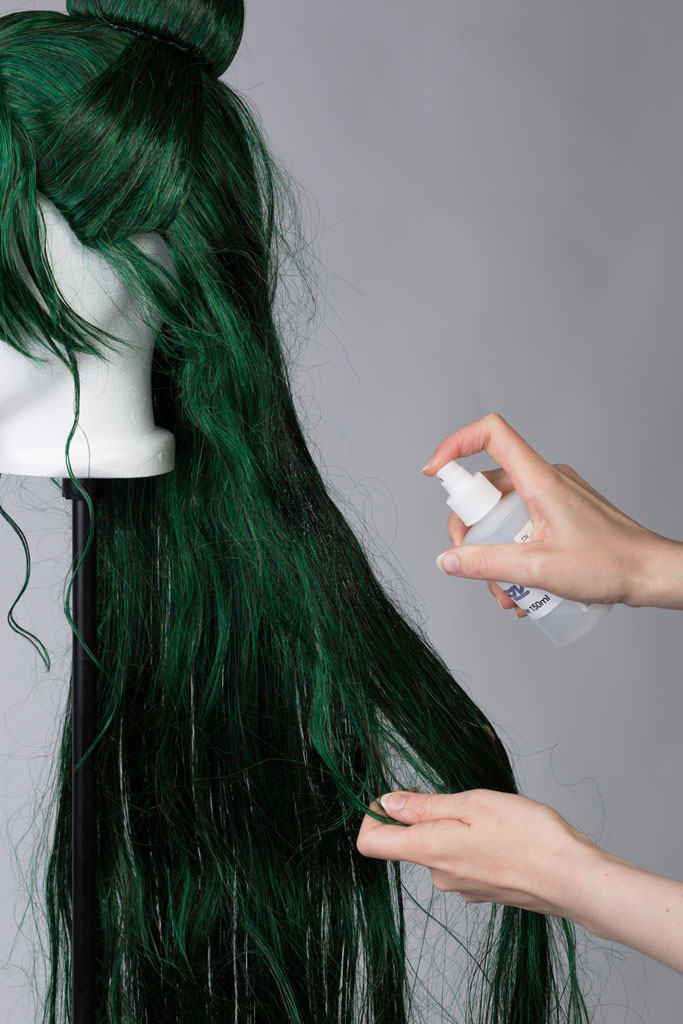
Embracing the versatility of synthetic weaves can transform your look instantly, but maintaining that fresh-out-of-the-salon appearance requires knowledge and the right techniques. Tangles can be the bane of synthetic hair, leading to a lackluster appearance and reduced lifespan of your weave.
Fortunately, with expert insights from Martha Ellen Mabry, a seasoned hairstylist and founder of Headchop Hair Studio, along with practical tips curated by wikiHow staff writer Janice Tieperman, you can keep your synthetic weave looking smooth and tangle-free.
This guide will walk you through the essential steps, from selecting the best synthetic hair to daily maintenance routines, ensuring your weave remains as flawless as the day it was styled.
Whether you’re a first-time synthetic weave wearer or a seasoned enthusiast, understanding how to prevent tangling is crucial for sustaining the beauty and functionality of your hairpiece. By adhering to these guidelines, you can enjoy a tangle-free synthetic weave that endures through various styles and occasions.
Choosing the right synthetic weave
Opt for high-quality synthetic hair
When choosing the right synthetic weave, it’s imperative to prioritize quality. High-quality synthetic hair is less prone to tangling and often mimics the texture and appearance of natural hair more closely. Investing in premium synthetic weaves, as recommended by experts from BreastCancer.org, can make a significant difference in the longevity and manageability of your hairpiece.
These superior fibers are crafted to withstand regular wear and maintenance, ensuring that your style remains sleek and tangle-free for longer periods.
Moreover, the caliber of synthetic hair affects how it responds to care routines and styling products. High-quality synthetic weaves are more resilient against the rigors of detangling and less likely to fray or lose their luster after washing.
By selecting a top-tier synthetic weave, you’re not only enhancing your immediate look but also investing in the enduring health and appearance of your hairpiece.
Consider the texture and type of synthetic weave
Alongside quality, the texture and type of synthetic weave play a pivotal role in preventing tangling. Different textures, such as straight, wavy, or curly, have varying propensities for knots and snarls. For instance, a curly synthetic weave may require more frequent detangling than a straight one.
It’s essential to choose a texture that aligns with your lifestyle and the amount of time you’re willing to dedicate to maintenance. Additionally, the type of synthetic fiber—be it Kanekalon, Toyokalon, or others—also affects tangling.
Some fibers are coated with a silicone finish that helps reduce friction, a common culprit behind tangles. By considering both the texture and the type of synthetic weave, you can select a hairpiece that not only suits your aesthetic preferences but also is more manageable in the long run.
Remember, the goal is to maintain a beautiful, natural-looking weave that stands up to daily activities without becoming a tangled mess. By being selective about the texture and type of synthetic hair, you’re setting yourself up for a smoother, more enjoyable experience with your synthetic weave.
Whether you’re styling for a special occasion or everyday wear, the right choice will keep your weave looking fabulous and tangle-free.
Proper care and maintenance
Regularly detangle the weave
Proper care and maintenance of your synthetic weave are crucial to keeping it free from tangles. Regular detangling is a must to maintain the weave’s pristine condition. Utilize a wide-tooth comb or a specialized wig brush, which you can find at most beauty supply shops, to gently work through knots and prevent matting.
Start from the ends and gradually move upward to the roots to minimize breakage and maintain the integrity of the fibers. This methodical approach to detangling, as suggested by wikiHow, helps in preserving the weave’s natural look and prolonging its lifespan.
It’s also important to detangle your synthetic weave when it’s damp, as this makes the process easier and less damaging to the hair.
After rinsing with lukewarm water, apply a conditioner formulated for synthetic hair to provide slip and ease the detangling process.
Remember to be gentle and patient; rushing can lead to unnecessary damage and more tangles. By incorporating regular detangling into your care routine, you can ensure that your synthetic weave remains smooth, manageable, and ready to impress.
Use a gentle shampoo and conditioner
When it comes to washing your synthetic weave, the choice of shampoo and conditioner is paramount. Avoid regular shampoos that contain harsh chemicals not suited for synthetic fibers. Instead, opt for wig-specific or gentle cleansing products designed to care for synthetic hair.
These specialized shampoos and conditioners help clean the weave without stripping away the silicone coating that often keeps the fibers detangled and lustrous.
As recommended by experts, massage a modest amount of shampoo into the weave, ensuring both roots and ends are treated for a thorough clean. Then, rinse with lukewarm water and follow up with a wig conditioner to maintain the hair’s softness and manageability (wikiHow).
After washing, it’s crucial to avoid wringing or rubbing the weave with a towel, as these actions can cause tangles and damage the synthetic fibers. Instead, gently blot the excess water with a towel and transfer the weave to a wig stand to air dry.
This not only helps in retaining the shape of the weave but also prevents additional tangling that can occur when the hair is left in a heap. By using the right products and techniques for washing and drying your synthetic weave, you can significantly reduce the likelihood of tangling and extend the life of your hairpiece.
Avoid excessive heat styling
Excessive heat styling is a major culprit in causing tangles and damage to synthetic weaves. Unlike human hair, synthetic fibers are not designed to withstand high temperatures, which can lead to melted strands and irreversible harm.
To maintain the integrity of your synthetic weave, it’s best to avoid heat tools such as flat irons, curling wands, and blow dryers. If you must style your weave, use heat-free methods or opt for heat-friendly synthetic hair that can tolerate lower temperatures.
Always refer to the manufacturer’s guidelines to ensure you’re not exceeding the recommended heat settings. Following this advice will help keep your synthetic weave looking smooth and tangle-free without compromising its quality (wikiHow).
For those times when styling is necessary, consider using steam rollers or wet setting techniques that do not involve direct heat. Additionally, investing in a wig stand for proper storage can prevent the weave from becoming misshapen and tangled due to heat exposure.
By prioritizing heat-free styling methods and proper storage, you can significantly extend the life of your synthetic weave and keep it looking as natural and tangle-free as the day you bought it.
Protecting the weave while sleeping
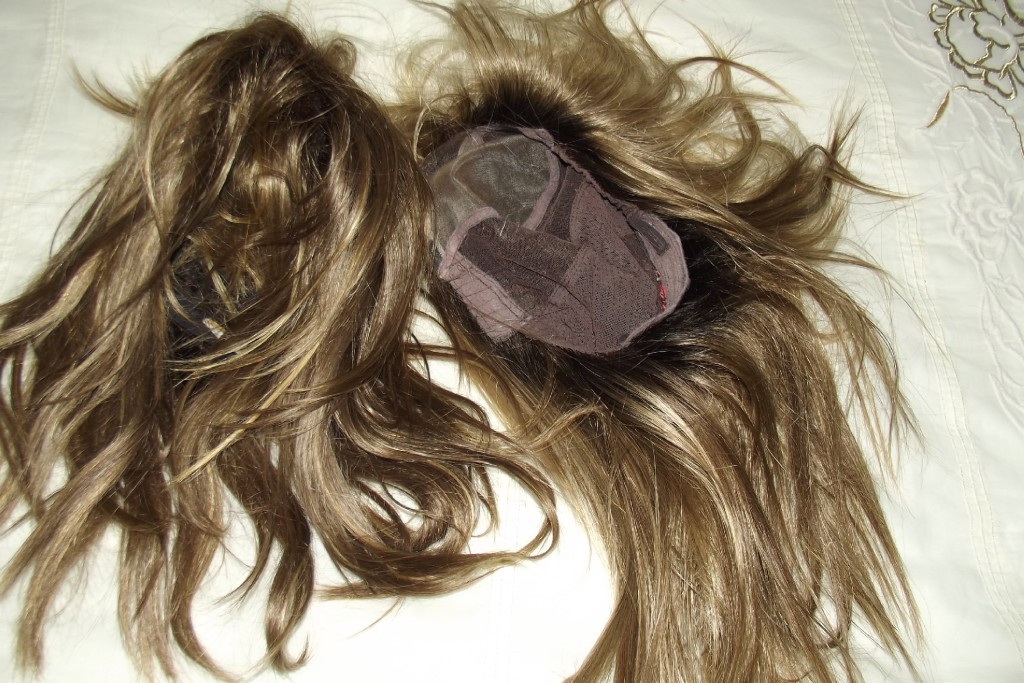
Wrap the weave with a silk or satin scarf
To protect your synthetic weave while you sleep, wrapping it with a silk or satin scarf is an effective strategy. These materials are smooth and can help reduce friction between the weave and your pillowcase, which is a common cause of tangling and matting.
By securing your weave gently with a silk or satin scarf, you ensure that the fibers remain aligned and tangle-free throughout the night. This simple step not only preserves the style of your weave but also minimizes the need for detangling and restyling in the morning, saving you time and effort.
Moreover, silk and satin scarves help maintain the moisture balance of the synthetic fibers, preventing them from drying out and becoming brittle. It’s a small investment that can make a significant difference in the longevity and appearance of your synthetic weave.
Remember to wrap your hair loosely to avoid putting unnecessary tension on the weave, and make sure your hair is completely dry before going to bed to prevent any mold or mildew from forming within the fibers.
By incorporating this protective measure into your nightly routine, you can wake up to a sleek, smooth, and ready-to-style synthetic weave every morning.
Avoid sleeping with wet hair
Going to bed with wet hair is a surefire way to wake up to a tangled synthetic weave. Moisture can cause the fibers to stick together, leading to knots and matting that are difficult to manage. To prevent this, always ensure your synthetic weave is fully dry before you hit the pillow.
If you’ve washed your weave or been caught in the rain, take the time to air-dry it completely or use a cool setting on a blow dryer if the manufacturer’s instructions permit. This precaution helps maintain the weave’s structure and texture, keeping it smooth and manageable for the next day.
Additionally, if you’re in a situation where your weave hasn’t fully dried by bedtime, consider using a wig stand to allow it to air-dry overnight in a cool, dry area.
This will not only prevent tangling but also protect the integrity of the weave’s fibers. By ensuring your synthetic weave is dry before sleeping, you’re taking an essential step in tangling prevention, which contributes to the overall care and longevity of your hairpiece (wikiHow).
Avoiding activities that cause tangling
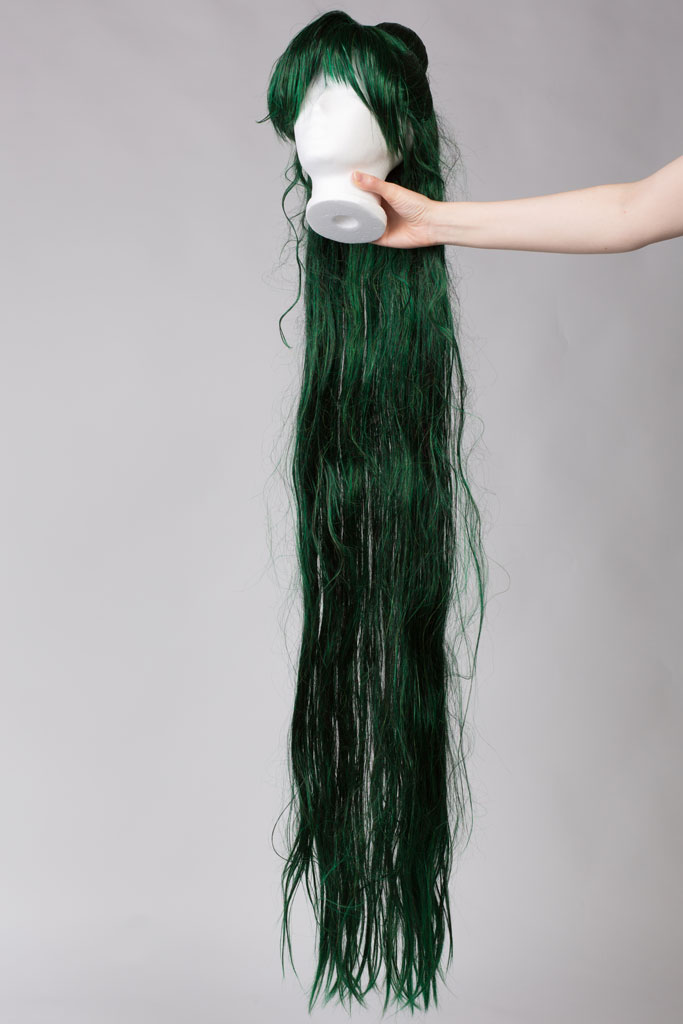
Avoid excessive sweating and exposure to water
Excessive sweating and prolonged exposure to water can be detrimental to the integrity of your synthetic weave, leading to tangles and a diminished appearance.
Activities that induce heavy sweating, such as intense workouts or spending time in humid environments, can cause the weave fibers to swell and stick together, making them prone to tangling.
To maintain the sleek look of your synthetic weave, it’s advisable to wear a protective cap during such activities or to avoid them altogether if possible. Keeping your weave dry and free from sweat will go a long way in preserving its smoothness and preventing knots.
Similarly, frequent contact with water, whether from swimming or showers, can have a negative impact on your synthetic weave. Water exposure can strip away the coating that keeps the fibers detangled and can lead to a frizzy, unmanageable texture.
If your lifestyle involves regular swimming, consider investing in a high-quality waterproof swim cap to shield your weave from the water. By minimizing your synthetic weave’s exposure to moisture and sweat, you can significantly reduce the risk of tangling and extend the life of your hairpiece.
Minimize friction and rubbing against clothing or accessories
Friction is another common culprit behind the tangling of synthetic weaves. The constant rubbing against clothing, scarves, and even the back of chairs can cause the fibers of your synthetic weave to tangle and mat. To minimize this risk, be mindful of the materials that come into contact with your hair.
Opt for smooth, non-abrasive fabrics like silk or satin, which are less likely to cause friction. Additionally, when wearing collared shirts or jackets, keep your weave up in a loose bun or ponytail to prevent it from getting caught and tangled in the fabric.
Accessories like necklaces and backpack straps can also contribute to tangling. Be cautious when donning jewelry or bags, ensuring that your synthetic weave doesn’t get snagged or rubbed by these items.
By taking these simple precautions, you can significantly reduce the friction that leads to tangles, keeping your synthetic weave looking flawless and easy to manage.
Conclusion on how to keep synthetic weave from tangling
In conclusion, maintaining a tangle-free synthetic weave is all about adopting the right care routine and being mindful of daily activities that could compromise its integrity.
By choosing high-quality synthetic hair, regularly detangling, using appropriate hair care products, and protecting your weave from potential damage during sleep and daily activities, you can enjoy a beautiful, smooth hairstyle for longer.
Remember, the longevity and appearance of your synthetic weave are largely dependent on how well you care for it. With these expert tips and a little bit of effort, you can keep your synthetic weave looking as good as new, avoiding the frustration of untimely tangles and matting.
Whether you’re a seasoned weave wearer or new to the world of synthetic hair, these guidelines will help you navigate the challenges of upkeep. By following the advice of professionals like Martha Ellen Mabry and incorporating these best practices into your routine, you can ensure that your synthetic weave remains a stunning and hassle-free addition to your personal style.
Keep your weave in top condition and let it enhance your look without the worry of tangling.
Sources:
- https://www.wikihow.com/Keep-a-Synthetic-Ponytail-from-Tangling
- https://www.tiktok.com/@hairanatomyuk/video/7232778153351990554
- https://www.tiktok.com/@tonyaemm_/video/7181857052912831787
FAQ on how to keep synthetic weave from tangling
-
How do I stop my weave from tangling?
Before washing, DETANGLE! Use a Sulfate-Free Shampoo. Wash Hair in one Direction. Conditioner wash (co-wash) your Hair Most Time. Air Dry your Hair and Avoid Heat. Your hair will LOVE Argan Oil! Wrap Hair in Silk or Satin Scarf Prior to Sleeping.
-
How do you detangle synthetic weave?
Detangling your wig with a Tangle Teezer can be a game-changer when it comes to maintaining your wig’s appearance. By choosing the right Tangle Teezer for your needs, starting at the ends, and using short, gentle strokes, you can easily and effectively remove tangles and knots without damaging your wig.
-
How do you hide knots on a synthetic wig?
If it’s synthetic then just use makeup foundation under the lace and a little on top as well to make it blend it in to your skin. For both methods, put some concealer in the parting space too.
-
Why is my synthetic wig always frizzy and knotty?
Synthetic wigs get frizzy when you have been using them daily. These wigs tend to lose their stylish look and shape when you put them near the heating appliances. Heat makes the wigs drier, and the synthetic fibres start producing static electricity.
Originally posted 2023-05-12 09:12:43.


